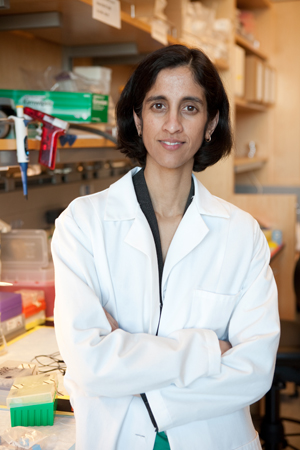
ARPA-H Listening Session
 Tejal A. Desai, President of AIMBE
Tejal A. Desai, President of AIMBE
August 11, 2021
Thank you for the opportunity to speak to you today. I am here in my capacity as President of the American Institute of Medical and Biological Engineering (AIMBE), an organization representing over 35,000 bioengineers from academia, industry, and government, to advance medical and biological engineering for societal impact. I am also professor and chair of bioengineering at UCSF, where I have seen firsthand the impact of rapid technology development for preventing and combatting disease and addressing healthcare disparities.
I am heartened by the amazing progress that has been made over the past 18 months in accelerating fundamental biological and bioengineering discoveries to transformative biomedical technologies and lifesaving treatments. Whether it was prototyping and testing advanced PPE for healthcare workers, realizing nanoscale sensors for high sensitivity point of care diagnostic testing, or building on years of research in lipid nanoparticles to enable our highly effective mRNA vaccines to reach target cells in the body, engineering technologies have played a key role in biomedical innovation. What we have realized is that true breakthroughs do not often come from one discovery alone, but rather bringing together numerous advances from different fields to achieve a transformative goal. That is where bioengineers thrive – at the intersection of fields, at the intersection of basic and translational science, identifying gaps and proposing solutions.
As bioengineers, we have been trained to invent, build, test, refine, reiterate. We have been trained to bring together skillsets from a variety of fields, whether it is cell biology or quantum physics in order to solve hard problems. This mindset of needs-based design and problem driven-solutions, coupled with the cross-fertilization of disciplines, should be a hallmark of ARPA-H teams. In this regard, having ARPA-H have close association with NIBIB and the bioengineering community would be a strength. We can build on success of fundamental research at NIH and maximize the development to meaningful application. Additionally, ARPA-H should play a major role in facilitating partnerships with the FDA and biotech/medical device companies in order to ensure that these innovations reach their maximal potential and have a pathway to reach the patient. We hope that each funded project has a regulatory and business pathway to move forward should the science and technology come to fruition. ARPA-H should play a major role in facilitating and mentoring this process.
While the stated focus of ARPA-H is on combatting diseases such as Cancer, Diabetes, and Alzheimer’s, I would also urge you to consider cross cutting platform technologies that can provide transformative impact of multiple diseases. Just like drug delivery technology has been key to the success of the vaccines, other platform technologies such as engineered immune modulation, molecular scale imaging, and in situ nanosensors that can detect the earliest hallmarks of disease have the potential to impact a broad spectrum of healthcare challenges. Areas that are not disease specific but have the potential to transform healthcare such as digital medicine and predictive health can not only lead to improved quality of life but also reduced healthcare costs and ensure more equitable community access.
Finally, with the opportunity to create a new entity, there is an opportunity to build in a culture of equity, inclusion, and transparency. I urge us to think about bringing together teams of scientists and engineers diverse backgrounds and ideas to ensure that we pursue creative, bold new ideas and fully capitalize on innovation. Equity and diversity should be core value of ARPA-H. This not only includes supporting projects or platforms that address health equity but also supporting diverse teams and considering the impact of the work on all communities.
 AIMBE
AIMBE
